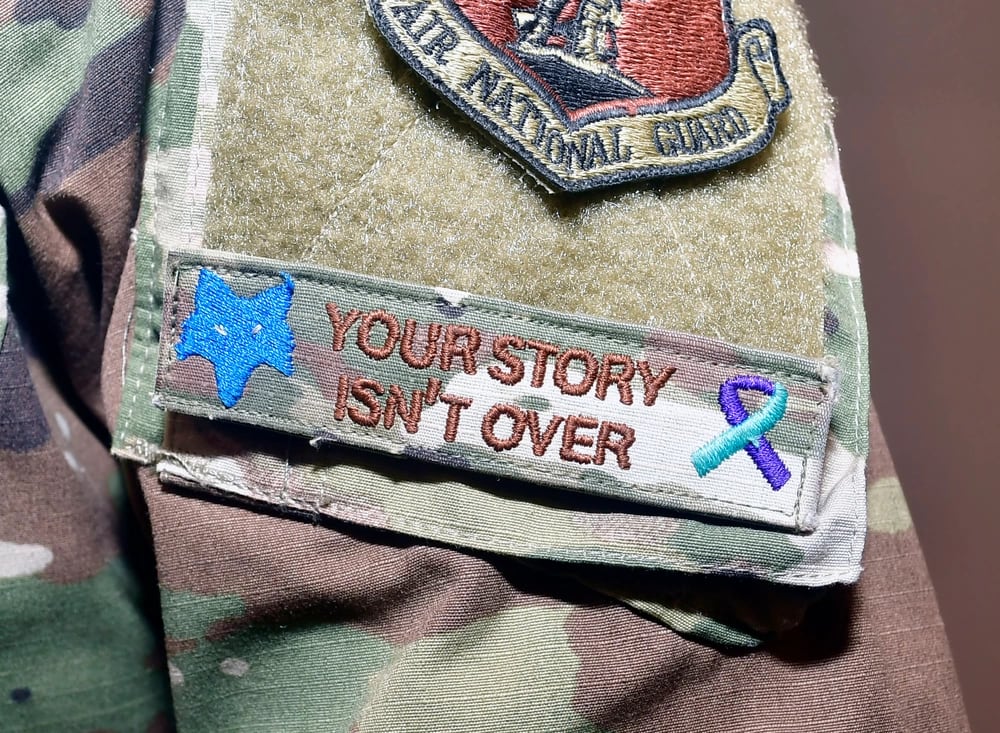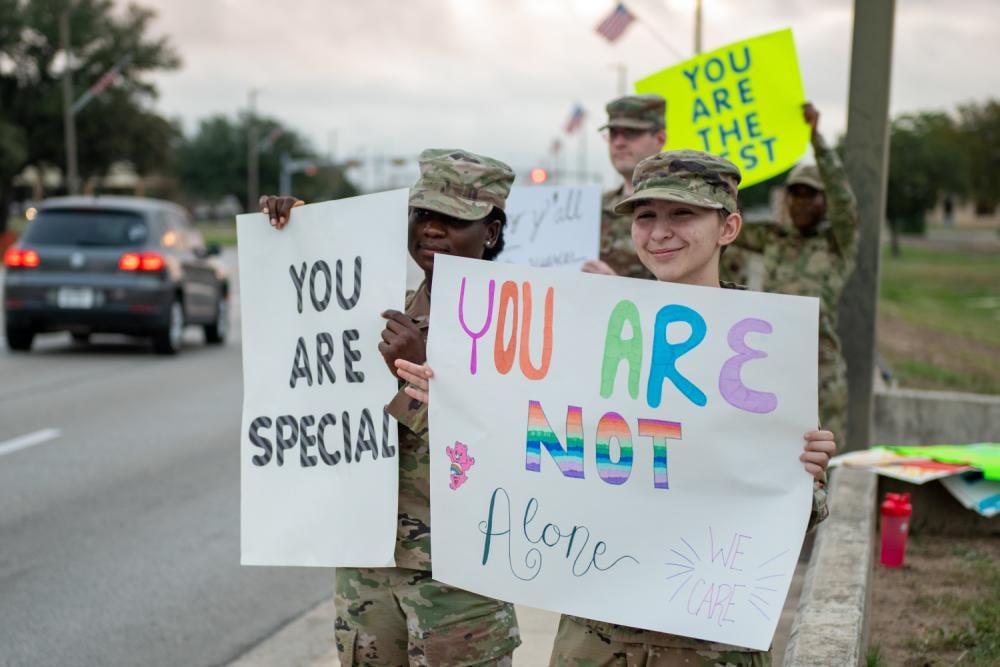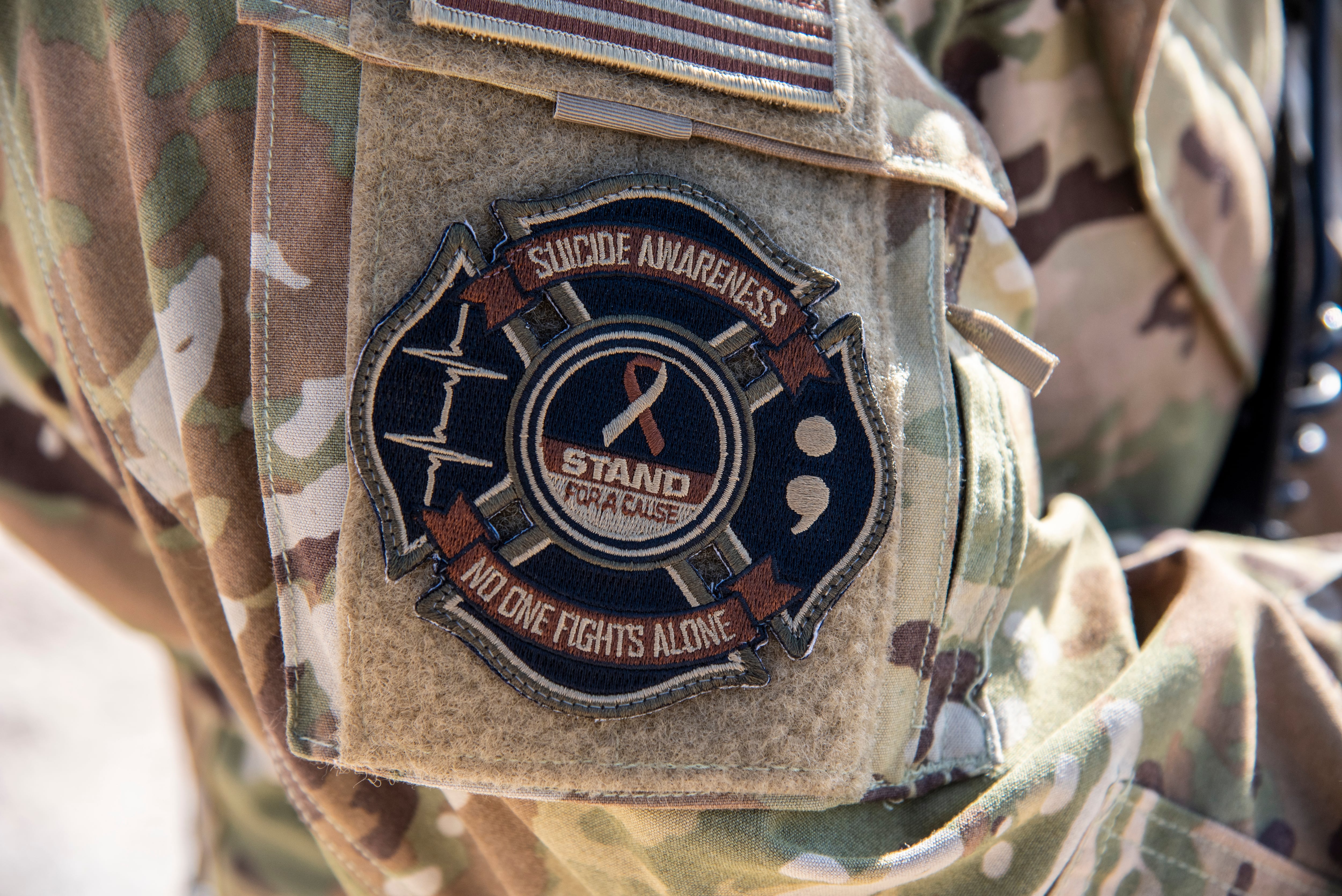Troops, veterans and family members experiencing suicidal thoughts can call or text the 24-hour Suicide and Crisis Lifeline at 988 or visit VeteransCrisisLine.net.
Gallows humor. Toxic or disengaged leadership. High operational demands. Rampant and normalized alcohol use. Unwillingness to seek help or show weakness.
Those are just a few of the dozens of trends and themes observed in a new, comprehensive analysis of suicides across the Air Force in 2020.
RELATED

The new study, released earlier this month in conjunction with the Uniformed Services University of the Health Sciences and the Defense Suicide Prevention Office, aims to create a better understanding of the factors that drive airmen to die by suicide, develop recommendations to deter the act and provide services to those affected. It also tries to standardize the process by which the Air Force assesses that data, which can be decentralized and anecdotal.
The report comes as military leaders try to wrangle a mental health crisis that has plagued the armed forces for years.
In 2020, the Department of the Air Force recorded a total of 117 suicides, including 81 active duty troops, 16 Air National Guardsmen, 12 reservists and eight civilian employees, the report showed. Department-wide data includes the Space Force, which logged no suicides in 2020.
The Air Force clarified that the new report incorrectly listed the number of Air National Guard and Air Force Reserve suicides as 17 and 11, respectively.
Though the Air Force avoided a spike in self-inflicted deaths among uniformed personnel in 2020, the figure remains among the service’s highest suicide counts in recent years. In 2019, 137 uniformed airmen died by suicide, prompting units to stand down operations for a day to discuss resiliency and suicide prevention.
The new analysis found that 9 in 10 airmen who died by suicide in 2020 men, and 9 in 10 were enlisted. About a quarter of those who died had a history of prior suicide attempts; more than one-third had contacted a mental health provider within a year of their death.
Other findings include:
- 68.4% died by use of firearm, 70% of which were owned by the decedent
- Alcohol use was a factor in 39.3% of deaths
- 68.4% of decedents reported suicidal thoughts at some point in their lives, while 58.1% had previously communicated an intent to die by suicide
- Those who died by suicide had documented problems with their intimate partners (74.4%), family members (37.6%) and military members (24.8%). Workplace (53.8%), administrative or legal (43.6%) and financial problems (29.9%) also played a factor, and 80.3% faced issues in multiple categories
The report relied on a socioeconomic model used by the U.S. Centers for Disease Control and Prevention that considers factors that may contribute to or compound suicide risk, including social, relational and individual concerns, as well as factors that can disproportionately affect the military community compared to their civilian counterparts.
It also took into account suicide reports developed by the Defense Department, as well as medical, personnel and investigatory records, to build profiles. The research included factors such as evidence of military sexual trauma evidence, drunk driving convictions and other information as available.
RELATED

“No one factor exists in a vacuum,” the report said.
Researchers found that mental health problems related to childhood trauma, like abuse and household violence, contributed to Air Force suicides in 2020. So too did dozens of other factors, including failing to seek help, and worry that doing so could hurt a person’s career; job stress related to deployments and permanent changes of station; failures of leadership and the military medical community; relationship and financial problems.
The report encourages Department of the Air Force leaders to better promote firearm safety, publicly post materials to educate troops on the warning signs of suicide, and encourage a culture of seeking help, among dozens of other recommendations to address the underlying causes of suicide.
Katherine Kuzminski, a military personnel expert at the Washington-based Center for a New American Security, said the report reflects greater emphasis by the Pentagon and service secretaries to reduce harmful behaviors, from suicide to toxic commands, as well as a greater focus on firearm safety.
She applauded its holistic approach in addressing problems like stereotypes about masculinity and alcohol use, as well as the impact a suicide can have on a community.
“At the end of the day … the goal is to increase our lethality and our readiness, right? The impact that a suicide has on a whole unit and on a military installation is much broader than simply the people who knew that individual or who were in the same unit,” she said.
Suicide continues to be a problem for the Air Force, which has pledged more efforts to help. According to the most recent DOD data, 70 uniformed personnel — including 51 active duty airmen and two Space Force guardians, 13 Air National Guard and four reservists — had died by suicide in the first nine months of 2023. That outpaced the 65 suicides recorded in the Department of the Air Force in the same period of time in 2022.
Air Force leaders, including its top brass, acknowledge the need to improve access to mental health care and destigmatize seeking help. The service has launched a team to discuss ways to boost troop and family resiliency and other initiatives, such as a campaign to distribute gun locks that can slow access to firearms.
Installations across the Air Force will use the report, along with command climate assessments, to develop an annual suicide-prevention plan, service spokesperson Master Sgt. Deana Heitzman told Air Force Times.
Future reports will retroactively examine deaths in 2018, 2019 and 2021, which researchers said could better inform future mitigation efforts. The Air Force is also planning an annual analysis of all suicides, starting with 2022 data, as it seeks to better understand the problem and drive down the number of deaths, Heitzman said.
“We found this report provided a more comprehensive view and understanding of the problem sets surrounding military suicide prevention, intervention and postvention, which led to the decision to continue to use this method for analysis,” Heitzman said.
Courtney Mabeus-Brown is the senior reporter at Air Force Times. She is an award-winning journalist who previously covered the military for Navy Times and The Virginian-Pilot in Norfolk, Va., where she first set foot on an aircraft carrier. Her work has also appeared in The New York Times, The Washington Post, Foreign Policy and more.





